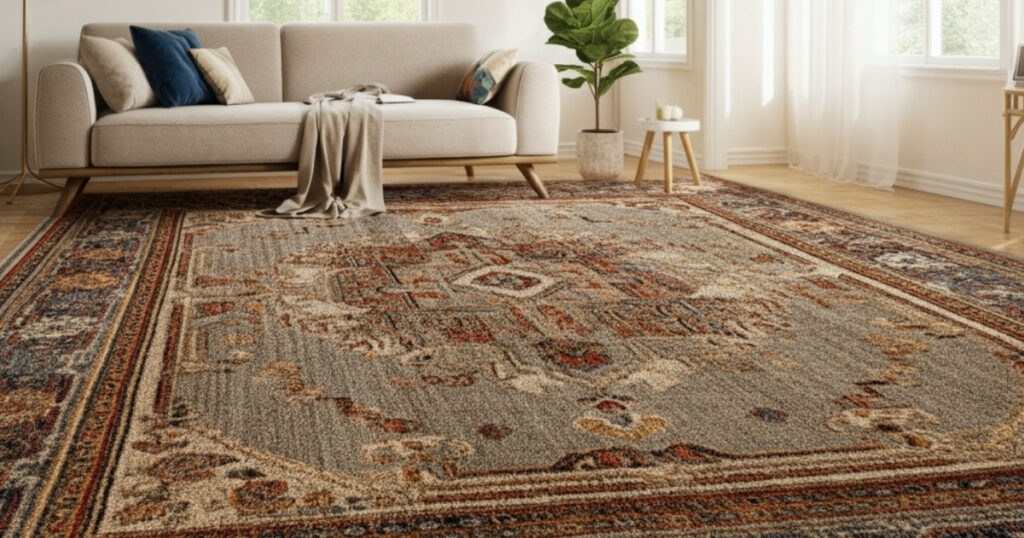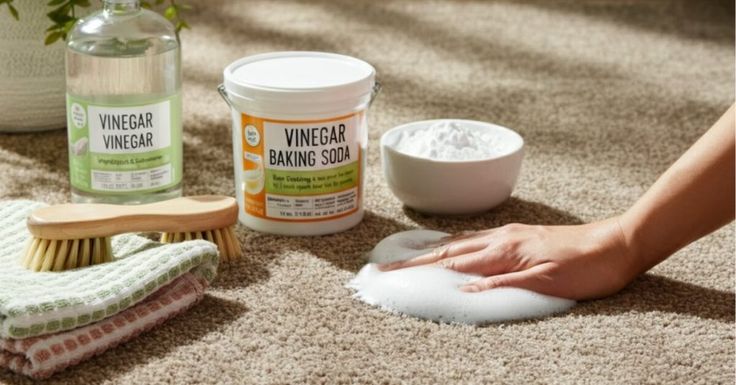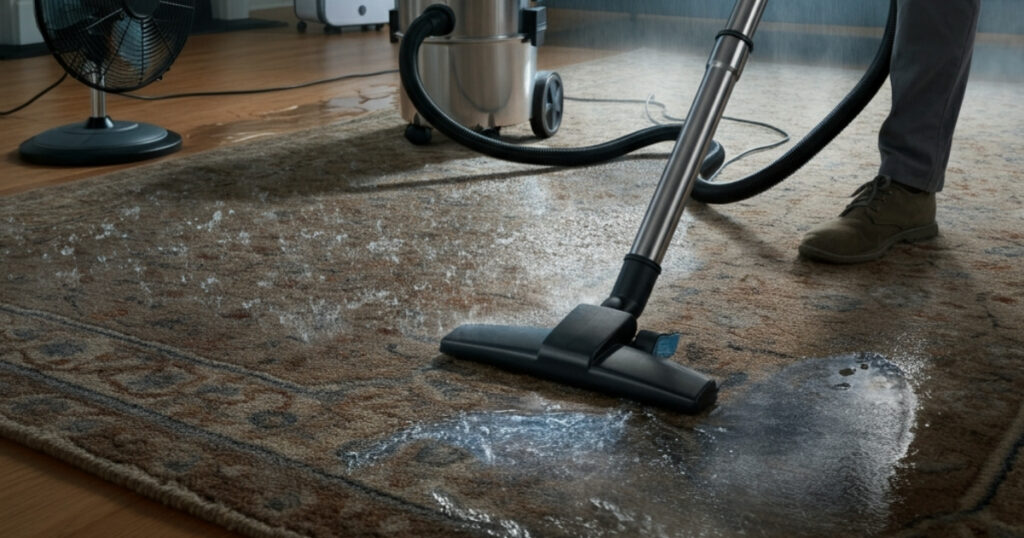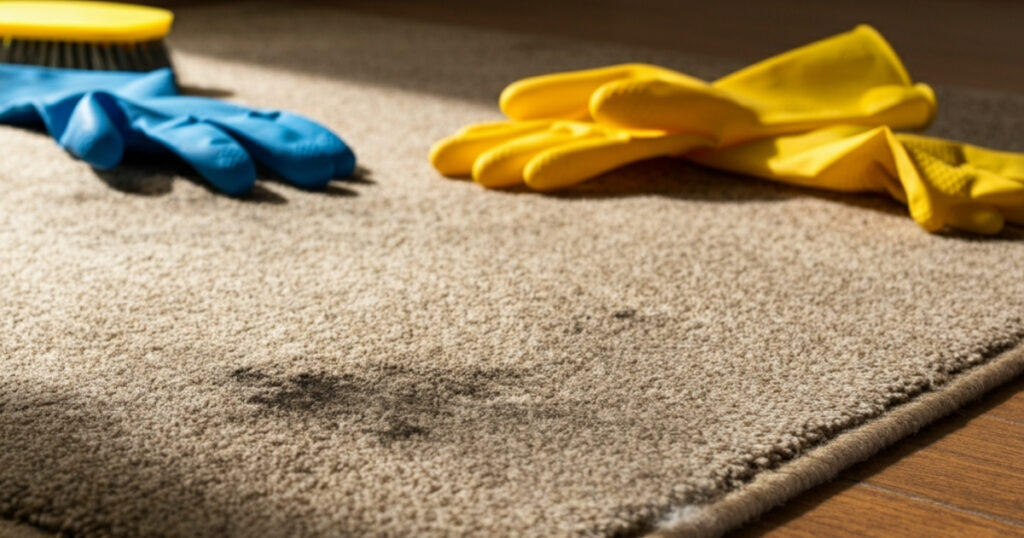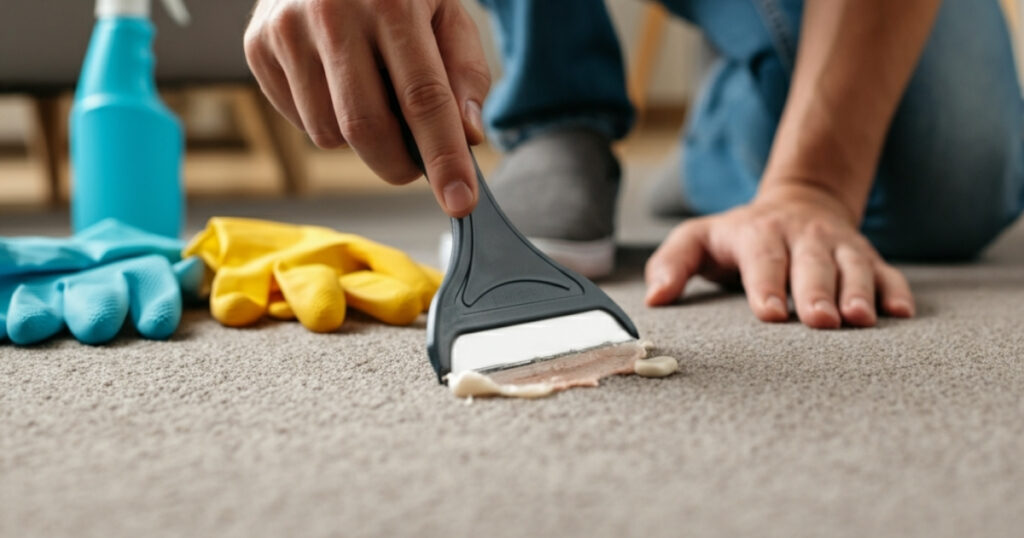As an Amazon Associate, I earn from qualifying purchases.
Finding mold on your carpet can be alarming. It’s not just unsightly; it can also pose health risks and damage your home. Learning how to remove mold from carpet effectively is crucial for maintaining a healthy living environment. This guide will walk you through everything you need to know, from identifying mold to using the right cleaning methods to prevent it from returning. With the right approach, you can tackle this problem and restore your carpet to its clean, safe state.
Mold is a type of fungus that thrives in damp, dark, and humid conditions. When mold spores land on a wet surface, like a carpet that has been exposed to a spill, leak, or high humidity, they can begin to grow and spread. This growth can happen surprisingly quickly, often within 24 to 48 hours. Besides the visible green, black, or white patches, mold often produces a distinct musty odor. If you notice a persistent damp smell in a room, it’s a strong sign that you might have hidden mold growth. Addressing it promptly is key to preventing further damage and protecting your family’s health.
This comprehensive guide will provide you with a step-by-step process for carpet mold removal. We’ll cover everything from the necessary safety precautions and tools to various cleaning solutions, including both natural and chemical options. Additionally, we’ll share expert tips on how to prevent mold from coming back, ensuring your home remains a clean and healthy space.
Contents Overview
Understanding Carpet Mold Before You Begin
Before you start scrubbing, it’s important to understand what you’re dealing with. Not all discoloration on a carpet is mold, and different types of mold can require different levels of intervention.
What Causes Mold on Carpets?
Mold needs three things to grow: moisture, a food source (like the organic fibers in your carpet), and the right temperature. The most common cause of carpet mold is excess moisture. This can come from several sources:
- Spills: Liquids that aren’t cleaned up and dried quickly can seep into the carpet padding.
- Leaks: Leaky pipes, roofs, or windows can create a constant source of moisture.
- High Humidity: Homes in humid climates or areas with poor ventilation, like basements, are prone to mold growth.
- Flooding: Major water damage almost always leads to mold if not professionally remediated immediately.
Identifying Mold on Your Carpet
Knowing how to spot mold is the first step. Here are the key signs to look for:
- Visible Growth: Mold can appear as spots or patches of various colors, including green, black, white, or even pink. It might look fuzzy or slimy.
- Musty Odor: A persistent earthy or musty smell is a classic indicator of mold, even if you can’t see it. The smell is caused by microbial volatile organic compounds (MVOCs) released by the mold.
- Allergy Symptoms: If you or your family members experience increased allergy symptoms like sneezing, coughing, or itchy eyes when in a particular room, it could be a reaction to mold spores in the air.
Safety First: Preparing for Mold Removal
Before you learn how to remove mold from carpet, you must prioritize your safety. Mold spores can be harmful when inhaled, so protecting yourself is non-negotiable.
Essential Safety Gear
Gather these items before you begin the cleaning process:
- N95 Respirator Mask: This will prevent you from inhaling airborne mold spores.
- Goggles: Protect your eyes from spores and cleaning solutions.
- Gloves: Use long, rubber gloves to protect your hands from both the mold and the chemicals you’ll be using.
- Old Clothing: Wear long-sleeved shirts and pants that you can either wash in hot water or discard after cleaning.
Ventilate the Area
Proper ventilation is critical to disperse mold spores and chemical fumes.
- Open all windows and doors in the room.
- Use fans to direct air out of the windows, creating a negative pressure environment that helps pull spores out of the room.
- If possible, seal off the affected room from the rest of the house using plastic sheeting and tape to prevent spores from spreading.
How to Remove Mold From Carpet: A Step-by-Step Guide
Once you have your safety gear and have ventilated the area, you can begin the process of removing the mold. This guide covers methods for small, manageable mold patches. For large areas (more than 10 square feet), it is highly recommended to call a professional.
Step 1: Dry the Carpet Thoroughly
Mold cannot survive without moisture. Your first task is to completely dry the affected area.
- If the carpet is damp from a recent spill, blot it with dry towels.
- For larger damp areas, use a wet-dry vacuum to extract as much water as possible.
- Set up fans and a dehumidifier to run continuously until the carpet and padding are completely dry. This could take a day or more. You can check for moisture by pressing a dry paper towel firmly into the carpet.
Step 2: Vacuum the Area
Once the carpet is dry, use a vacuum cleaner with a HEPA filter to remove any loose mold spores and debris. A HEPA filter is crucial because it can trap microscopic spores that a standard vacuum would just recirculate into the air. After vacuuming, take the vacuum outside to empty the canister or dispose of the bag to avoid releasing spores back into your home.
Step 3: Apply a Mold-Killing Solution
Now it’s time to treat the mold. You can use a commercial carpet mold cleaner or a DIY solution. Always test your chosen cleaner on a small, hidden spot of the carpet first to ensure it doesn’t cause discoloration.
DIY Mold Removal Solutions
Here are a few effective options for getting mold out of your carpet using household items:
- White Vinegar: Mix equal parts white vinegar and water in a spray bottle. Vinegar is a mild acid that can kill many types of mold.
- Baking Soda: Mix a quarter tablespoon of baking soda with water in a spray bottle. This is a natural and safe option that also helps absorb odors.
- Hydrogen Peroxide: For light-colored carpets, a 3% hydrogen peroxide solution can be effective. However, it can have a bleaching effect, so it’s essential to test it first.
Using Your Chosen Solution
- Lightly spray the moldy area with your cleaning solution. Avoid oversaturating the carpet, as excess moisture can encourage more mold growth.
- Let the solution sit for about 10-15 minutes to allow it to penetrate and kill the mold.
- Use a stiff brush to scrub the area. Work from the outside of the stain inward to prevent it from spreading.
- Blot the area with a clean, dry cloth to absorb the cleaning solution and lifted mold residue.
Step 4: Rinse and Dry Again
After scrubbing, you need to rinse the area to remove any remaining cleaning solution.
- Lightly dampen a clean cloth with water and blot the area.
- Use a wet-dry vacuum to extract any remaining moisture.
- Finally, point fans at the area and use a dehumidifier to ensure it dries completely. This final drying step is the most important for preventing the mold from returning.
Preventing Future Carpet Mold Growth
Removing mold is only half the battle. Preventing it from coming back is just as important. Follow these tips to keep your carpets mold-free.
Control Humidity Levels
Mold thrives in humidity. Keep the humidity in your home below 50%.
- Use a dehumidifier, especially in basements and other damp areas.
- Ensure your home is well-ventilated by using exhaust fans in kitchens and bathrooms.
- Run your air conditioner during humid months, as it helps remove moisture from the air.
Address Leaks and Spills Immediately
- Clean up any spills as soon as they happen. Blot the area immediately and ensure it dries completely.
- Regularly inspect your home for leaks in the roof, plumbing, or around windows and fix them promptly.
Choose the Right Carpet and Padding
- Consider using synthetic carpet fibers like nylon or olefin, as they are less absorbent than natural fibers like wool.
- Opt for mold-resistant carpet padding, which is treated with an antimicrobial agent.
- Avoid installing carpet in areas prone to moisture, such as bathrooms, kitchens, and basements.
When to Call a Professional Mold Remediation Service
While DIY methods can be effective for small areas of mold, some situations require professional help. You should call a professional if:
- The moldy area is larger than 10 square feet.
- The mold has been caused by a major flood or sewage backup.
- You can smell a strong musty odor, but cannot find the source of the mold.
- Someone in your household has a compromised immune system or severe respiratory issues.
Professional mold remediation services have the specialized equipment and expertise to safely and thoroughly remove mold, ensuring it doesn’t return.
Your Next Steps for a Mold-Free Home
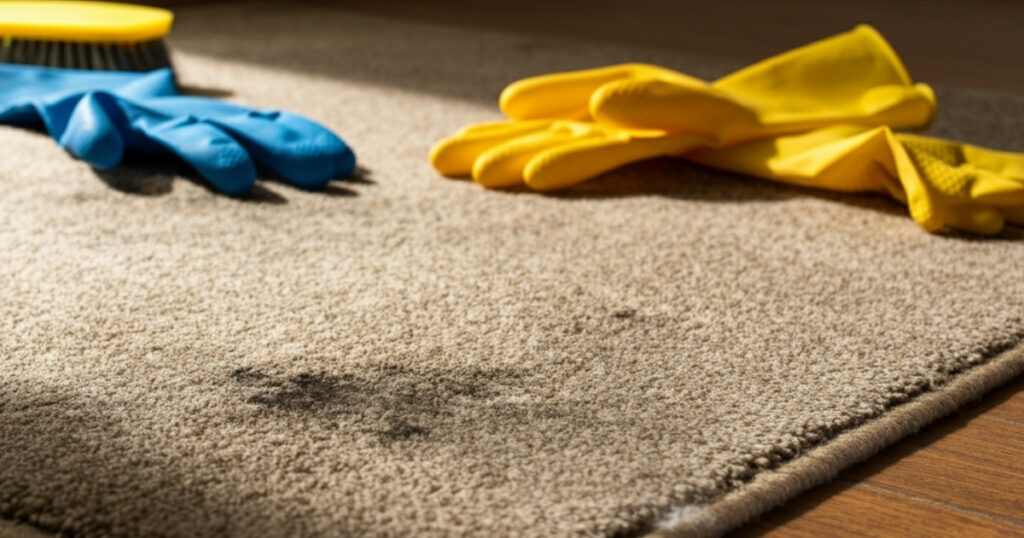
Learning how to remove mold from carpet is an essential skill for any homeowner. By following these steps—ensuring safety, drying the area, cleaning thoroughly, and taking preventative measures—you can effectively manage small mold problems. Remember that the key to success is controlling moisture. Keep your home dry and well-ventilated, and you’ll create an environment where mold simply can’t thrive. For persistent or large-scale issues, never hesitate to seek professional assistance to protect your home and your health.
Frequently Asked Questions
1. Can I use bleach to remove mold from my carpet?
No, it is generally not recommended to use bleach on carpets. Bleach can damage the carpet fibers and cause discoloration. Furthermore, it may not effectively kill mold on porous surfaces like carpets and can leave behind moisture that encourages regrowth.
2. Is it possible for mold to grow under the carpet?
Yes, it is very common for mold to grow on the carpet padding and subfloor, especially if the moisture problem has been present for a while. If you suspect this is the case, you may need to pull back the carpet to inspect and treat the area underneath.
3. How long does it take for mold to grow on a wet carpet?
Mold can begin to grow on a wet carpet within 24 to 48 hours. This is why it is so important to dry any spills or water damage as quickly as possible.
4. Can a steam cleaner remove mold from a carpet?
Yes, a steam cleaner can be effective at killing mold because of the high temperatures. However, it also adds moisture to the carpet, so it’s crucial to ensure the carpet dries completely and quickly afterward. Using a wet-dry vacuum after steam cleaning is a good practice.
5. Is black mold on a carpet always toxic?
No, not all black mold is the toxic “black mold” (Stachybotrys chartarum). Many types of mold are black in color. While any mold can cause health issues, especially for sensitive individuals, only a professional can identify the specific type of mold and its potential toxicity.
As an Amazon Associate, I earn from qualifying purchases.

